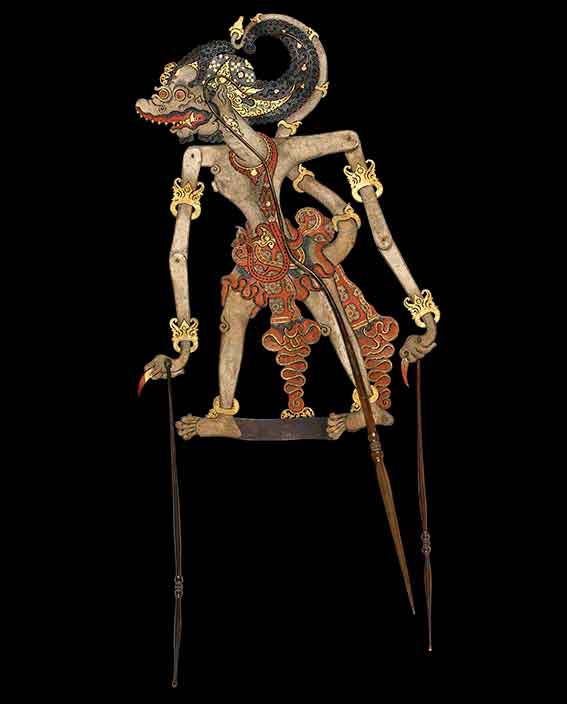Shadow Puppet from Indonesia
As part of the exhibition Sir Stamford Raffles: Collecting in Southeast Asia 1811-1824 (19 September 2019 to 12 January 2020), at the British Museum, a number of objects, including Indonesian shadow puppets, relating to Indonesian theatre were displayed. Raffles, a controversial figure in history, was an avid collector of objects from the region, particularly amassing material from Java.
Raffles’ collection was one of the first large gatherings of material from the region, providing us with a window into the wider worlds of Southeast Asia and Europe at the beginning of the 19th century. The collection was given to the British Museum in two large donations, one in 1859 from Rev. William Charles Flint, Raffles’ nephew, and the other in 1939 from Mrs J.H. Drake, Raffles’ great-grandniece. The collection today comprises around 2,000 objects, mainly from Java, but also includes items from China, Sumatra (now part of Indonesia), India, Burma (Myanmar) and Siam (Thailand). The display included more than 130 objects, ranging from expressive Indonesian shadow puppets in the Cirebon style from the north coast of Java and striking wooden character masks from central Java, which were new when Raffles acquired them, to ornate bronze buddhas and bodhisattvas, protective amulets (which Raffles mistook for coins), and drawings of sites, buildings and stone sculptures.
Shadow puppet of the character Trigangga, son of Hanuman the white monkey from the Ramayana, Cirebon, western Java, late 1700s or early 1800s, hide, horn, fibre, pigment, gold leaf © Trustees of the British Museum


